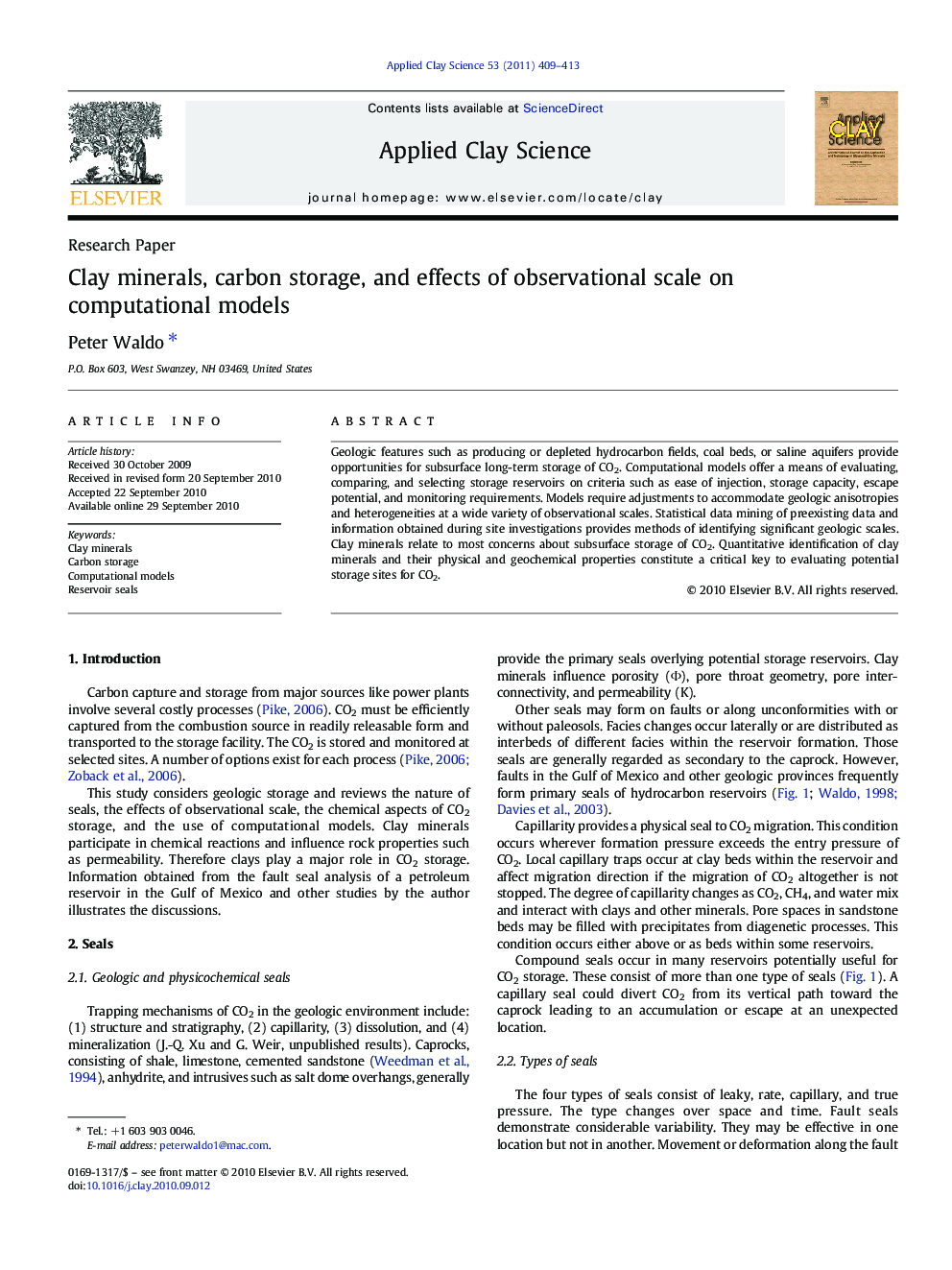| Article ID | Journal | Published Year | Pages | File Type |
|---|---|---|---|---|
| 1695451 | Applied Clay Science | 2011 | 5 Pages |
Geologic features such as producing or depleted hydrocarbon fields, coal beds, or saline aquifers provide opportunities for subsurface long-term storage of CO2. Computational models offer a means of evaluating, comparing, and selecting storage reservoirs on criteria such as ease of injection, storage capacity, escape potential, and monitoring requirements. Models require adjustments to accommodate geologic anisotropies and heterogeneities at a wide variety of observational scales. Statistical data mining of preexisting data and information obtained during site investigations provides methods of identifying significant geologic scales. Clay minerals relate to most concerns about subsurface storage of CO2. Quantitative identification of clay minerals and their physical and geochemical properties constitute a critical key to evaluating potential storage sites for CO2.
Research Highlights►Clay mineralogy influences the type and degree of seals in underground reservoirs. ►Characterization of the quantity and chemistry of clay minerals is essential to predicting the success of CO2 storage in underground reservoirs. ►Models of reservoirs require an understanding of the effects of clay minerals at a variety of scales.
